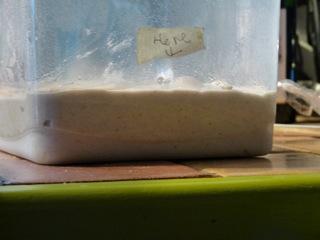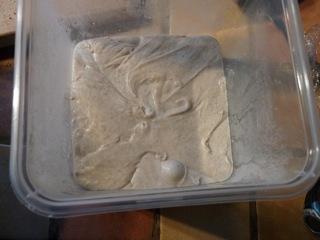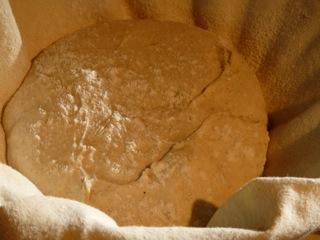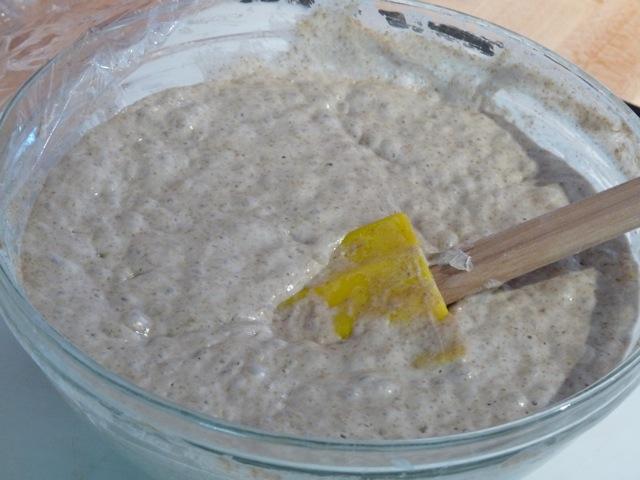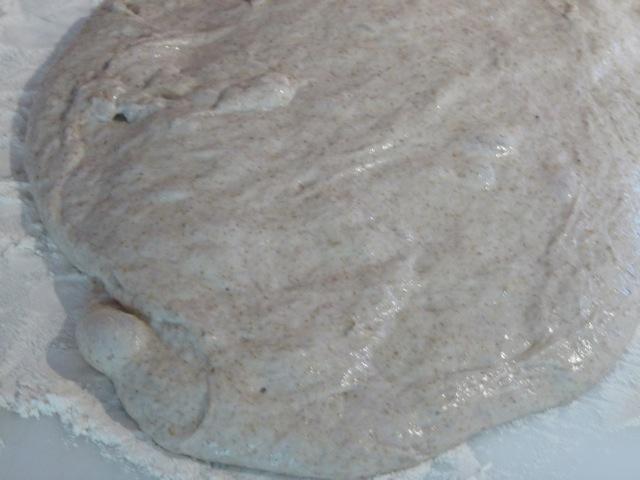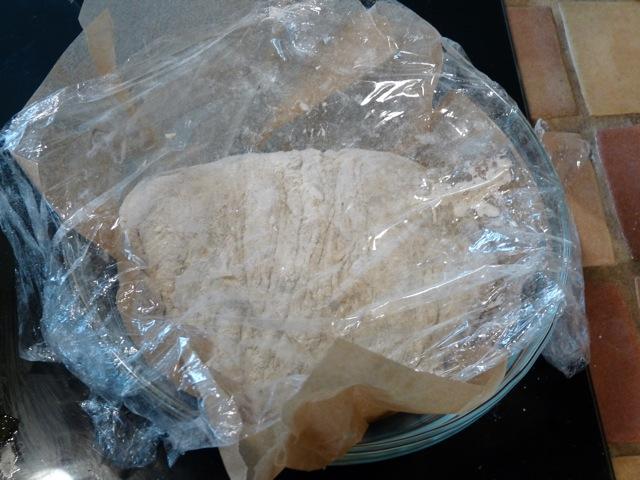-
Posts
84 -
Joined
-
Last visited
Content Type
Profiles
Forums
Store
Help Articles
Everything posted by Gayle28607
-
Perfect, blue_dolphin! That's where I will start this season. My mom's Betty Crocker cookbook didn't make it from her passing and house being sold to its new home in my house, as I had hoped. And I was in charge of all this, so I dropped the ball somewhere. That's the recipe I used, too, but I just have the basic ingredients now on a note card, which was how I took it to college and into my earlier life in states far from mom and the cookbook. Those notes ring such a bell. Thanks for sharing them. I suspect my obsession with making these cookies every holiday season will now be less onerous!
-
Okay. Thanks a lot, @chromedome, for that insight. I'm feeling a little less stupid. And feeling the lure of eBay for another old Mirro. The tube holds a lot more dough than the newer ones, and if I could just get the darn top to stay on, which might be more doable now that I'm considering options like duct tape, I might get another holiday season out of this one. I grew up in a family where we tripled our recipe always of these cookies, so that's a fair amount of butter, flour, eggs and sugar I want to move through the press and into shapes. It's a tradition! But, I think I will also hold back on a bit of the flour. That may be my issue, ultimately, as the dough is super stiff. I've never refrigerated it, as the recipe recommends. I can't even imagine how you'd do this if the dough was cold!
-
Have you made any of the classic spritz shapes - camels, trees and so on? If so, how? I can’t envision how the bag would work. Could one of those plates that make the shapes just be dropped into the narrow bottom of the bag? In this case, a canvas one? Sorry I’m being so slow on the uptake. I can imagine how you could extrude shapes that don’t require the press to be flush with the baking sheet. But most of the shapes need to be pressed through the decorative shape in the plate, and then be in contact with the baking sheet. Maybe I need to just get a canvas bag and try it. It would seem it would need an insert with legs to allow me to press the dough out properly. Or I’m having a failure of imagination. That’s always possible!
-
Oh my goodness. There are 11,000 people on the @rancho_gordo bean club waitlist! (According to the CBS story). Thank goodness I’m already in it. I do love it, and rave about the beans to anyone who will listen, so I get it. Well deserved publicity for a great product and a really thoughtful food grower. I had the mayocoba’s the other day, cooking them for a soup I love. They almost didn’t make it to the soup! Great meaty texture and a subtle smokey flavor that got lost in the soup. They were so good on their own that if they come in the bean club box again I’m eating them on their own.
-
I think I might go in the direction of the duct tape. Duct tape and screws! Brilliant ideas. I also found some speculation elsewhere that holding back a bit of the flour might be enough to let the press stay in one piece. But @andiesenji and @Toliver, does this mean that you don’t think a pastry bag could work for all these traditional spritz cookie shapes? I can’t imagine it, but I am a pastry bag innocent. All I’ve ever done is pipe some icing.
-
@blue_dolphin, I continued a bit with a web search, and am still in the dark. As you say, a star shape or a wreath made by tucking the ends of a star "log" together all make sense with a pastry bag. Not that it would be easy for me, as this is a very stiff dough, and well-suited to the press. But I did see a number of people selling the metal plates to make the shapes, so those are still out there. I'm wondering if I need to spring for another old Mirro, and hope that the top will stay on!
-
I know this isn't an active thread, but it has good info in it, so I decided not to start a new thread. I hope some of you will check in! I have the old Mirro "Cooky" press, but the screw-on metal lid has started to pop off. I might be able to get another old Mirro, but I noted in this thread that some of you use pastry bags for your spritz cookies. I am not a skilled pastry bag user, and I'm having a hard time imagining how to use a pastry bag with my metal shapes for cookies that I use with the now pretty much defunct Mirro press. So, those of you who use a pastry bag as a cookie press, can you explain how this works, or send me to a video or something? Meanwhile, I'll go back to searching the internet in the hopes of running across instructions. Somehow, I'm just not ready to let those yummy butter cookies in fun shapes disappear from the holiday baking agenda.
-
Thanks for your report, sparrowgrass. I have a Misto hidden away that I have kept in the hopes of being able to revive it. I'm off to try your method! It would be nice if this worked. Meanwhile I've grown accustomed to drizzling olive oil with abandon on everything. Not such a bad alternative, except the few times when you really need that light mist on top of crumbs or something.
-
Hi Porthos, I don't know if you are still looking for responses on this, but if you are, here's one more. I have cooked on a mishmash of cookware for years, some nicer pieces, most not so great. The cookware was acquired many years ago, before I had a steady job. I got it as I haunted second hand shops and occasionally scored OLD copper bottom Revere (maybe from the 50's?). I've used that stuff day in and day out for 30+ years. That old Revere is heavier stainless steel than what they made in the 90's. I haven't looked at Revere since then, so that is my point of comparison. Given your timeline, that might be what you are cooking with, too. As you have probably noticed, even the older, heavier Revere warps fairly easily. When I think I can get away with it I'll start and finish cooking in the same pot. You definitely have to be attentive, as you end up with the hot spots your note. I imagine that you, as have I, learned to adapt to the idiosyncrasies of this cookware long ago. It can be quite a dance to turn out something decent. I'll add that I am doing this cooking currently on some sort of strange electric disks that don't produce even heat, either. Recently, I got a 12 inch AC MC2 fry pan and a 4 quart AC LTD saute pan from CookwareandMore. Wow. Everything is easier, from browning to simmering to cleanup. I'm nuts about this heavier cookware. It makes cooking easier. I'll never forget the first time I sauteed onions in the new fry pan and then added some lovely fresh frozen whole plum tomatoes from the freezer. No little brown onion bits. No sticking. No need for my Revere Ware tricks! Now I'm in the process of added a few more pieces. I think the old Revere Ware has it's place, but I'm thinking it might be in someone else's kitchen.
-
Like all of you, I have been inspired, too. We have been snowed in here, so in honor of being at home and wanting to make the house smell wonderful, I started a recipe of something I grew up on called "Chicken and Biscuits" or "Chicken Fricassee." Mom uses the names interchangeably for a stewed chicken dish that gets ladled over wonderful, light, baking powder biscuits. Having more time than usual, I thought I'd browse through eGullet and see what you all were cooking, and headed down a different road as a result! I went from this cook-off to wondering "what is a chicken pie?" to realizing I need to learn more about stocks (where I was immersed for a long time), and am now back here, determined to use my chicken stock to first try dumplings and then with what is left use it to make the gravy for biscuits tomorrow. I think. The chicken and dumplings look so wonderful here that I've just got to try them! Whether dumplings or biscuits get paired with it, the chicken and aromatics have already throughly perfumed the house. Yum! Thanks for the cook-off inspiration.
-
That sounds really good. I'm going to have to try it. Thanks for posting!
-
Contaminated starter; I don't know. It smells really good to me. But then cheese smells good to me. I am definitely going to work on making the starter more robust, though I truly THOUGHT it showed all signs of strength and health as per Jackal's lessons. My dough temperature was 75 to 78 degrees during the fermentation period. Your loaves look gorgeous!
-
I have a new sourdough starter. When I started the culture a few weeks ago with only water and flour I got a very bubbly starter in 24 hours - it looked like a pancake ready to turn. I was so excited to see how lively it became in so little time. I continued feeding it, and ended up with a starter that regularly doubled after feeding. It's been in the fridge for a week. I decided to use a recipe from Dan Leader, and refreshed the starter according to his instructions. He says to ferment the dough until it is doubled, usually 2.5 to 3.5 hours. I gave up after 9 hours. (I did turn it as he suggests for a dough that isn't rising.) In disgust, I put the unrisen dough in the fridge to deal with today. I decided to divide the dough and shape the loaves and leave them to rise. It has been 1.5 hours since they came out of the fridge. If anyone sees this in time, what do you think I should do? Leave them to rise for hours and hours and then throw them away? The Leader recipe calls for 50% water and 62% liquid levain. The liquid levain called for 50g starter, 175g water, and 135g flour. I'm not sure what that makes the hydration. Pictures may help: Here is the dough in the fermentation phase: It was supposed to have risen to the bottom of the tape. After 8 hours, this is what I got. When I cut into the dough to see if it had any webbing or trapped gasses, there were none. But, in this photo you can see a big bubble. There were a few of those in the course of the fermentation. And here is the loaf proofing, at least in theory: I'll proceed somehow with this, but am very disappointed. I hope someone can help me to figure out what I've done wrong. I'd like this sourdough loaf to be my everyday bread. The results, so far, make me think I should go back to yeast.
-
Thanks for the link, agray. I have a sourdough rye loaf retarded in the fridge right now. I had planned to just bake it on the stone, but may go with the make-shift couche. Then again, maybe I should keep my learning experiences themselves separate, and just proceed as planned with the sourdough, as it is my first foray in the direction of wild yeast after many years absence. I planned to start a "minimalist" loaf today if the sourdough turns into a brick.
-
Well, I'm out on this one. I've never seen a notch quite like that one, in that location on the spoon, rather than on the handle. It looks a little like a rice paddle, though.
-
Could we get an update on the book from those who are working with it? I am particularly interested in comparisons with Bread Baker's Apprentice or other earlier Reinhart books, depending on your collection.
-
agray, this is the one I was thinking of. It was posted in this thread in November of 2006. Fromartz used a sourdough modification.
-
prasantrin, you are using a Le Creuset pot for this, too?
-
That is the question. I remember reading somewhere in this thread or in others about people using a peel for a very slack dough and having good results when depositing the dough on a stone.
-
I think my next loaf will go in with a round of parchment on the bottom of the pot. This may be the simplest solution. I'm also going to keep my eye out for a good deal on something about the same size as the LC casserole that I would then use only for bread baking, as much as I hate to have something that big that is single use. I've also read with interest about people's positive experiences baking without a pot, directly on a stone, with water for steam on the floor of the oven. If that worked as well for me as it seems to work for other people it would certainly remove the pot issue! The simplicity of the no-knead process with the pot has worked so well, and produced such a consistently delicious loaf, even with a little sticking, that I've been loath to stray too far from it. I am going to try using a cloth, too, at some point.
-
The pot in question is a 2 1/2 or 3 quart Le Creuset enameled cast iron casserole. It's always been my small "go-to" pot. It's mostly been used for sauteing savory things that wind up in a small stew or soup simmered in that same pot. My bet is that a pancake would stick to it like crazy. The bread has been so different than a pancake though. As I mentioned up thread, about half the time the bread releases perfectly, and the other half it only sticks for a while in a limited area on the bottom. I really appreciate your discussion of the well-floured cloth. I have a pastry cloth that I only use for pastry. Sounds like I need to do the same thing for bread. Intuitively, I thought the well-floured board would stick less than a cloth. It does make it easy to move the dough across the room and into the super hot pot.
-
I've had my dough stick to a well-seasoned cast iron dutch oven thoroughly preheated and measured by my infrared temp gun to 450 degrees. Hmm. Do you use the dutch oven for other things, too?
-
I wonder if residue is the issue? I have used the LC pot for many, many other things for many years. It's clean, but who knows? I know the oven is hot - I start at 500 degrees and turn it down after the dough is in the pot. I use a thermometer. But this is the only pot I've ever used for this recipe. Maybe I should try a new one and devote it to only this task? I hate to do that in some ways as I usually make all my cookware do many jobs. What I've usually done is sort of scrape it into the pot from my board. I've avoided the cloth. And, I agree that deflation doesn't seem to be an issue though I've tried to avoid it. The dough has always had great oven-spring.
-
This might be a good solution to try. I think this will be my next attempt. I pulled the parchment out of the pot, believe it or not, at 30 minutes. I ended up with the whole loaf on the stone, sans pot, sans parchment at that point, and finished baking it that way for the final 15 or 20 minutes. It is oddly shaped though, as I feared it might be. Lots of ridges and folds.
-
I hope experienced eGullet members will feel it's better to resurrect this wonderful old thread rather than beginning a new one. I've put my question here as it's about working on methods for the Bittman/Lahey no-knead bread. Way back on the first page of this thread people were talking about maybe using parchment to avoid too much sticking and too much deflation of the loaf on the way into the very hot vessel. If you're going with the pot technique and are worried about your cast iron pot, I'd maybe put the dough on parchment paper first and then put it in the pot. I've been working with this bread for a while now, using many of the suggestions found in this thread, mostly those focused on flavor. (Saving a bit of dough from a previous loaf to add to the current, 1.5 tsp of salt, using some wheat or rye, and so on.) The flavor is very good now, as is the texture. I'm trying something different today, though, because about 50% of the time I have a loaf that sticks to the Le Creuset pot. I up-end the pot on the cooling rack, and eventually the loaf falls out. This is okay, but I'd rather be able get the loaf out right away. The last time I made this particular loaf, which subs 3/4 c of whole grain ground rye for 3/4 of a cup of bread flour, I put some olive oil on the surface of the boule, then left it to rise. This made no difference in sticking to the LC, but it did make the crust different in a way I don't care for. So that's out. So today I am trying parchment- a fairly big piece. If I had cut a piece the size of the bottom of the LC pot, I would never get the dough from the proofing bowl to the pot. The dough is very soft and sticky. This is what it looks like after a long rise. (It rested at 80 degrees for about 20 hours.) After pouring from the bowl for the 15 minute rest on the board, you can see how fluid it still is. I always just fold it with the spatula, both sides to the center, then end to end. Now I'm thinking I may end up with a very oddly shaped loaf because it isn't heavy enough to flatten out the parchment in the bowl, and likely won't do that in the hot pot, either. Here's the pot, parchment, and dough in the bowl I use for the final two hour rise. I realized this might not be such a good idea after I put the roughly shaped dough in the bowl and saw how stiff the parchment remains. I wonder if anyone has any ideas, or has worked through this particular dilemma before and come up with a better solution? I'll bake this in about an hour, and see what I end up with. I'm just not liking the looks of this particular solution.





